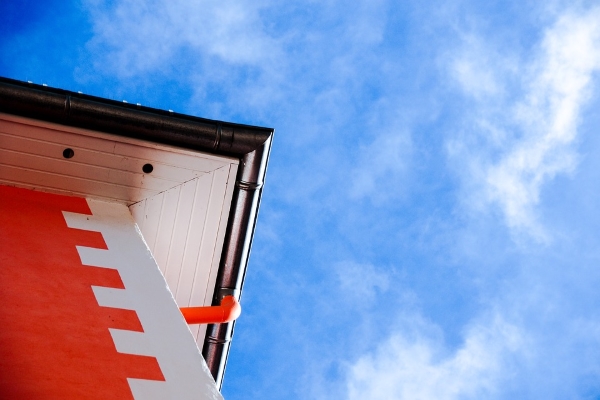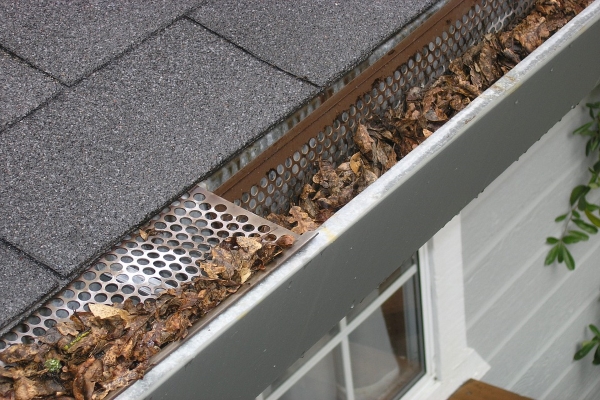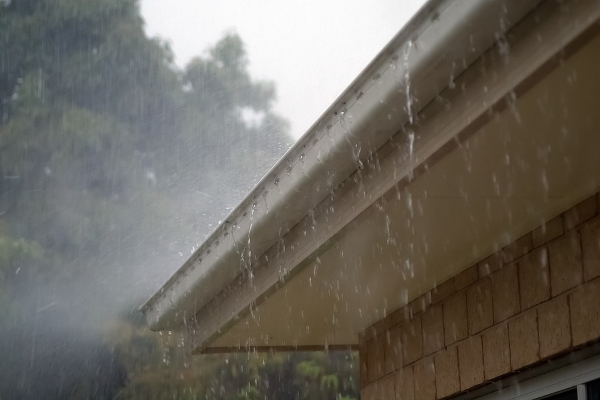Almost every modern home needs a gutter system. Rainwater pools after storms and snow will damage your roofs membrane if no system is in place to dispose of them effectively. If you know how to install gutters, you also have knowledge to repair them.

Most flat-roofed homes without gutters suffer from water pools placing the membrane on their roof under great duress. However, even homes with sloping roofs need a gutter system to make sure the roof disposes of water efficiently even during the strongest rainstorms.
There’s no quick way on how to install gutters. However, if you follow the steps below, you can carefully and easily install your gutters by yourself, save money, and give your roof a longer lifespan.

Gutter Materials and Styles
Gutters need not look too industrial and function-oriented. In fact, choosing the right material and shape adds to the house’s curb appeal. Most gutters are made from varying materials such as aluminum, steel, vinyl, and zinc. Each material’s cost varies per linear foot. Here are price estimates to help guide you on material costs.
- Aluminum: $2-$3 per linear foot
- Copper: $12-$25
- Seamless Aluminum: $5-$11
- Steel: $4-$6
- Vinyl: $1-$2
- Zinc: $10-$24
Below are the different types of gutters you can use for your home.
K-Style
This gutter has a flat bottom and back. its front usually has a decorative, folded shape that appears as a curve or ogee. It has varying styles and designs in the market. Professional roofing companies can modify the shape of the K-style gutter to suit your roof’s style.

Half-Round
This gutter has a traditional 50s-60s look and is as effective as the K-style gutter. It can work with any kind of roof and is on par with its counterpart’s performance. It has different styles and designs that might suit your house’s aesthetic.
These two are commonly used for most modern houses. Keep in mind there are other gutter styles and shapes available on the market, so try and shop around to see which one suits your home.
DIY Vs. Professional Gutter Installation Costs
If you know how to install gutters, then you can save so much money in the process. Installing a gutter on your own allows you to save money. A typical professional gutter installation for a 200-feet vinyl gutter (which costs about $1-$2 per linear foot) will cost about $2,000. Doing the installation on your own saves you almost a thousand dollars with a $1,050 material-only cost.
In addition, you will pay roofing experts for your system’s design ($160), old gutter removal ($100), and cleaning ($90), apart from installation.
Fortunately, it is not too difficult to design and install your own gutters if you follow the steps below.
How to Install Gutters Easily in Six Easy Steps
Preparing Plans and Measurements
Deconstruct your old gutters on a day with clear sky. Have the proper cutting and removal tools, such as hacksaws, screwdrivers, and light hammers to easily handle the task. Remember to dispose of these materials safely to avoid injuries.
As you perform its deconstruction, inspect the areas for any sign of rotted wood or decomposing gutter foundation materials. These weakened structures will not guarantee your gutter system can hold up for too long.
During the planning stage, measure the areas where you will install the gutters. Use small amounts of water to splash on top of your home. Observe the water and record areas with the most water buildup. Mark them in your diagram as downspout installation locations.
Once you have your measurements, list down the number of gutter hangers you’ll need. These will support the gutter and downspouts during the construction phase.

Pre-Assembling Your Gutters
Instead of connecting gutter sections while they’re installed on hangers, it would be best to pre-assemble them while they’re on the ground. Joining the sections on the ground with seam covers, caulk, and rivets are easier. You will not have to carry heavy equipment and support the gutter’s weight on the side of your roof. You prevent possible damages that lack of section supports may cause to your new system when you attach sections together on the ground.
Taking Care of Gutter Slopes
You cannot install gutters parallel to your roof’s fascia board’s angle (the small wooden section after your shingles, if you have them). Your new system needs a slope. To do this, you can use a nail in the higher section of your gutter, just half an inch below your shingles, on the fascia board.
Using a hard edge, subtract a fourth of an inch from the previous position every ten feet of gutter across your home’s fascia board. You can use chalk or strings to see the sloping angle of your gutters before you begin their installation.
Installing Downspouts and Outlets
Once you have installed your gutters properly, you can now begin installing downspouts. Double-check if there are any obstructions to your downspouts and outlets before you attach the downspout underneath the outlet. Make sure to mark the downspout outlets as well with a small chisel and hammer to snip the area.
Apply sealants and proper caulking when working with downspouts. Special gutter sealant, aside from installation rivets, creates a watertight-seal that helps your downspout collect heavy rainwater buildup and prolong its lifespan.
If you have more downspouts (which can inflate your construction costs), the fewer gutter slopes you need in your home.

Adding Gutter Flashing and Hangers
Gutters also come with flashings that go underneath your roof’s shingles (if your roof uses them). These metal gutter apron flashings go under the shingles. They also attach to the back edge of the gutter, overlapping the fascia board-attached area of your gutters.
It is possible that your metal gutter apron is short, disabling it from reaching the back edge of your gutter. You can use sheet metal under the bent flashing to provide better coverage.
After the gutters are screwed, you will need to install the hangers last. These small hangers need to be installed every two feet.
Conclusion
If you know how to install gutters, then you can definitely save lots of money. However, it does take time to install. While the process is easy especially if you have the right tools for the job, first-time DIY gutter installations are not always perfect. It would then be better to seek help when installing gutters from professional roofing companies.
















